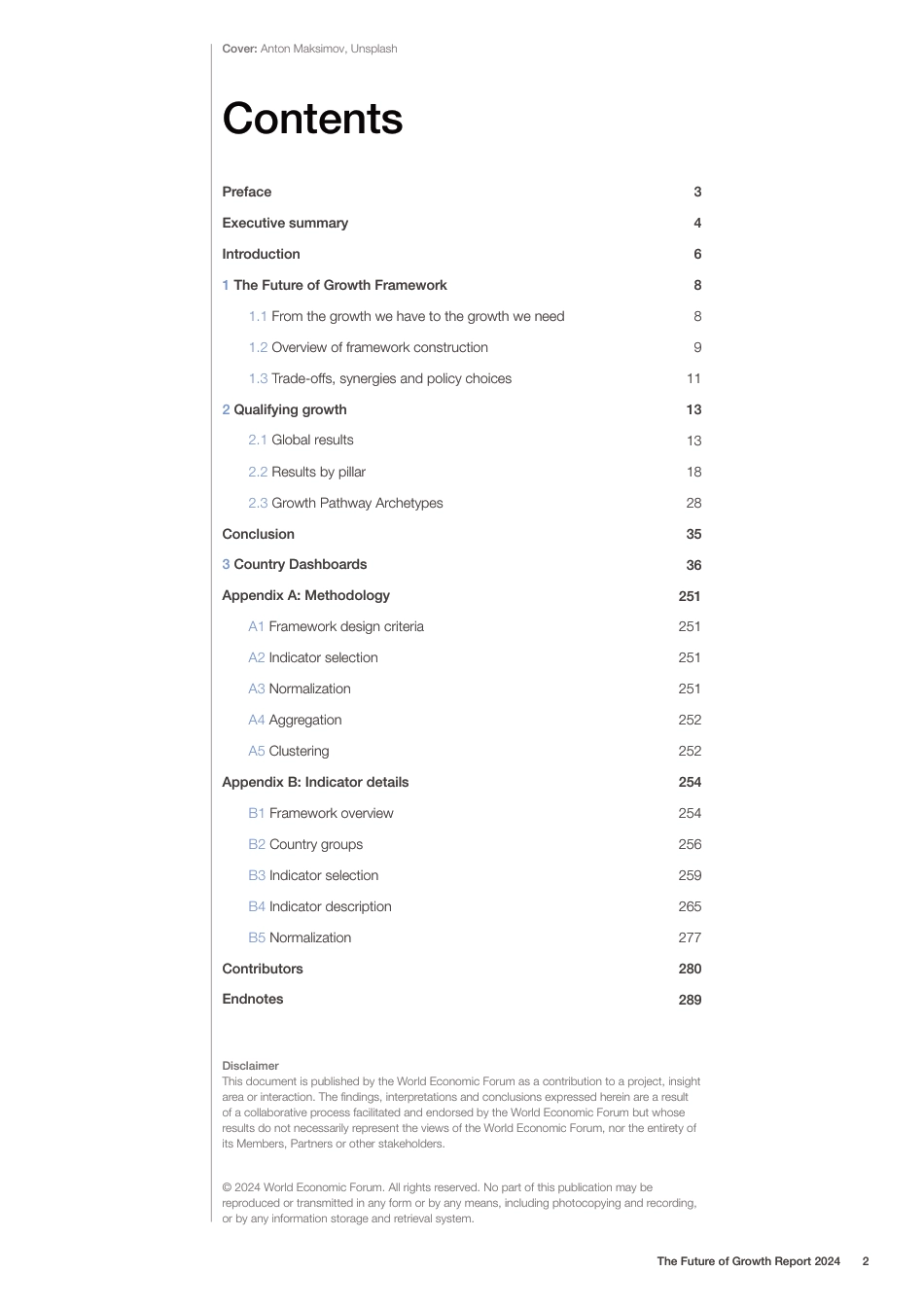The Future of GrowthReport 2024I N S I G H T R E P O R TJ A N U A R Y 2 0 2 4ContentsCover: Anton Maksimov, Unsplash© 2024 World Economic Forum. All rights reserved. No part of this publication may be reproduced or transmitted in any form or by any means, including photocopying and recording, or by any information storage and retrieval system.Disclaimer This document is published by the World Economic Forum as a contribution to a project, insight area or interaction. The findings, interpretations and conclusions expressed herein are a result of a collaborative process facilitated and endorsed by the World Economic Forum but whose results do not necessarily represent the views of the World Economic Forum, nor the entirety of its Members, Partners or other stakeholders.PrefaceExecutive summaryIntroduction1 The Future of Growth Framework 1.1 From the growth we have to the growth we need1.2 Overview of framework construction1.3 Trade-offs, synergies and policy choices 2 Qualifying growth 2.1 Global results2.2 Results by pillar2.3 Growth Pathway ArchetypesConclusion3 Country DashboardsAppendix A: MethodologyA1 Framework design criteriaA2 Indicator selectionA3 NormalizationA4 AggregationA5 ClusteringAppendix B: Indicator detailsB1 Framework overviewB2 Country groupsB3 Indicator selectionB4 Indicator descriptionB5 NormalizationContributorsEndnotes34688911131318283536251251251251252252254254256259265277280289The Future of Growth Report 20242PrefaceGlobal growth has lost momentum. On average, GDP growth has declined from more than 2% in advanced economies and nearly 6% in emerging and developing economies in the early 2000s to less than 1.5% and less than 2% in the post-COVID period. This sustained slowdown in growth has been com...



